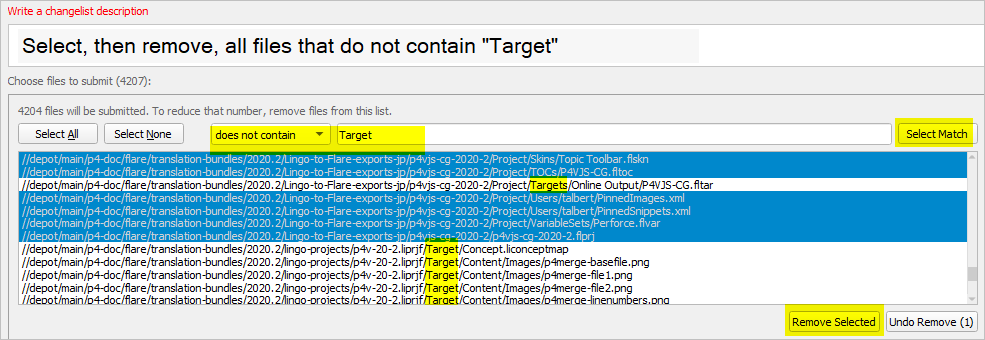

However, Subversion still ranks highly on the cost-benefit curve of VCS products, when considering its ease of use, simple installation, flexibility, and scalability, among other key features. SCCS was extremely useful when it came out… but that was 1972 and it is rather dated today! The version control timeline from the Plastic SCM Blog organizes many of the same VCS products in an illustration that lets you see history at a glance.There you will see that Subversion dates back to 2000 and there are quite a number of newer systems worth consideration. when was it commercially available and who is using it. One key piece of information available in the Wikipedia tables is the history and adoption of each product, i.e.
#Subversion changelist software
Their comparisons of version control software are very thorough, comparing a large number of facets of each in eight tables-Figure 1 shows a tiny excerpt highlighting an entry for Subversion:įigure 1: An excerpt from Wikipedia’s comparison of source control systems Wikipedia offers outstanding, detailed comparison tables for many different types of software. If you know what specific features you need in a version control system, but are not sure which systems deliver which features, start by reading the Wikipedia entry. Obviously I think Subversion is a great system, otherwise I would not have invested the time and energy in writing what you are reading but it is not necessarily the best choice for you. Saving a copy of your work folder as work_save or work_bak or work-05-21-2011 is source control, just not very good source control! Which source control system should you select? And as several posts point out, you are probably already using source control even if you have not installed a source control system. The discussion for ‘ Why should my team adopt source control?‘, on the other hand, gives you page after page of reasons why the answer is clear, including multiple-release support, rollback capability, diagnostic capability, traceability, backups, and more. These statements serve to illustrate how overwhelmingly clear the answer to the question is. Not having some sort of source control is pure insanity. Version Control is the most important tool that a programmer has, even more important than the actual programming languages. Version control is only necessary where the number of programmers is > 0. Here are a few of the more poignant comments from Is Subversion (Version Control) Necessary For A Small Development Group (1-2 programmers)? on StackOverflow: StackOverflow offers a wealth of supporting material if you need to convince yourself, your manager, or your colleagues. No matter the size of your development team, you should use source control. More often than not in computing, black and white answers dissolve to shades of grey on closer inspection: Not so with the question of whether to use source control. Introduction Should you use source control? Determining what to commit together: the change set.Grouping your files for reducing commit clutter: the change list.Understanding the two-stage process of Subversion.Handling multiple edits to the same line of a file: conflicts.Coping with a multi-user environment: the merge.Which source control system should you select?.Creating a changelist will not affect the repository. Note: Changelists are a local feature to organise your changed files before committing them to the local repository. Remove a file from a changelist: Commit Pane | right-click a file under SVN in a changelist | Remove from changelist.Move a file to an ignore-on-commit changelist, not committing the changes to the SVN repository: Commit Pane | right-click a file under SVN | Move to changelist > ignore-on-commit.Move a file to an existing changelist: Commit Pane | right-click a file under SVN | Move to changelist >.

Create a new changelist: Commit Pane | right-click a file under SVN | Move to changelist >.Apart from giving an immediate visual indication of groupings, you can also use the group to select which files to commit, add them to an ignore-on-commit list so they are not committed or move them from one changelist to a different one. In the Commit Pane you can see the files to commit, grouped by changelists. You can apply these labels to files you want to be associated with that changelist. You can create changelist labels to group the changed files before they are committed to your SVN repository.

Go Up to Subversion Integration in the IDE


 0 kommentar(er)
0 kommentar(er)
